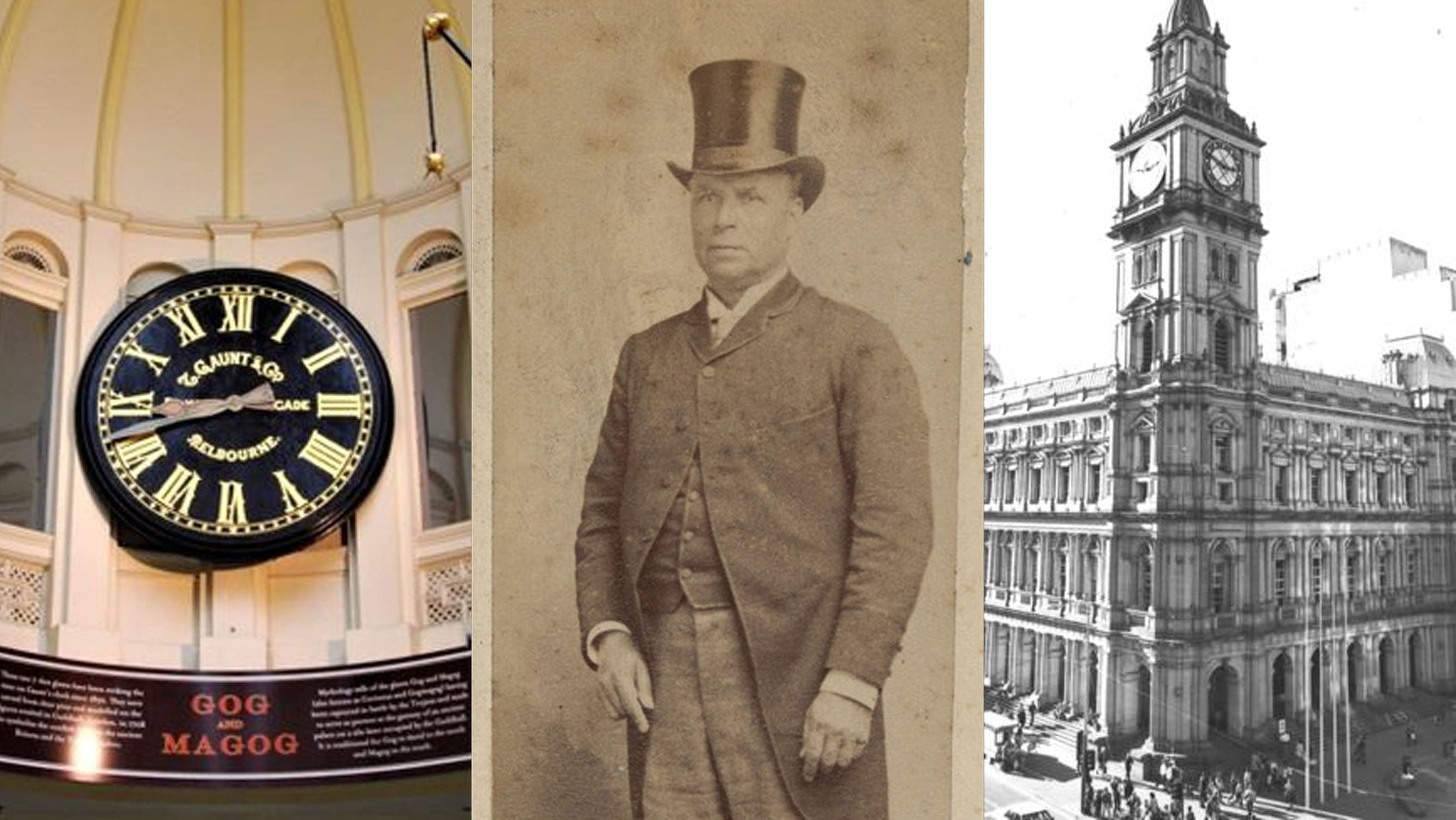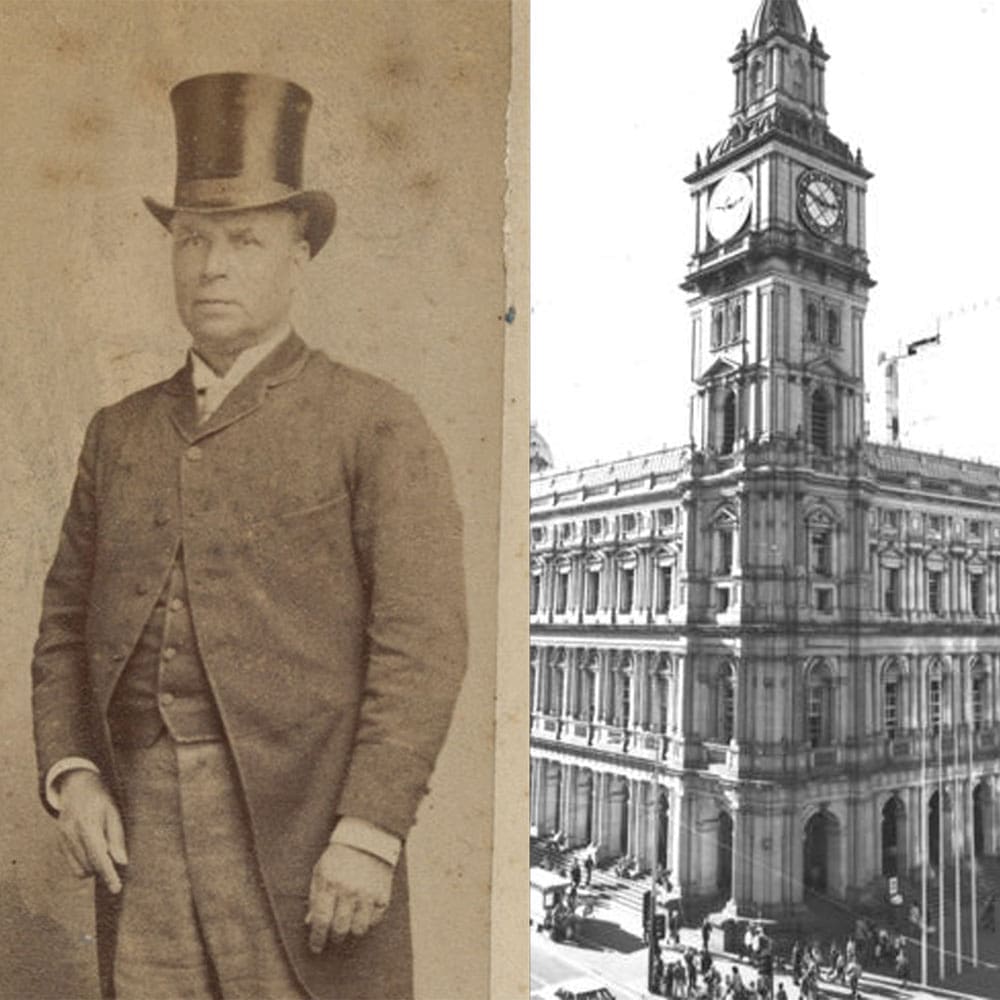The story of Thomas Gaunt, premier Melbourne clockmaker
Fergus NashAfter the opening of Time+Tide’s Watch Discovery Studio in our hometown of Melbourne, I started thinking about the city’s relationships with clocks and timekeeping. I can’t begin to count the amount of times I’ve arranged to meet people ‘under the clocks’ at Flinders Street Station, ‘under the clock’ at Melbourne Central shopping centre, or ‘in front of the clock’ at Southern Cross Station. Having largely developed in the second half of the 1800s, colonial Melbourne relied on having numerous public clocks before pocket watches became affordable and practical for the population at large. The man responsible for a lot of those clocks was Thomas Gaunt.
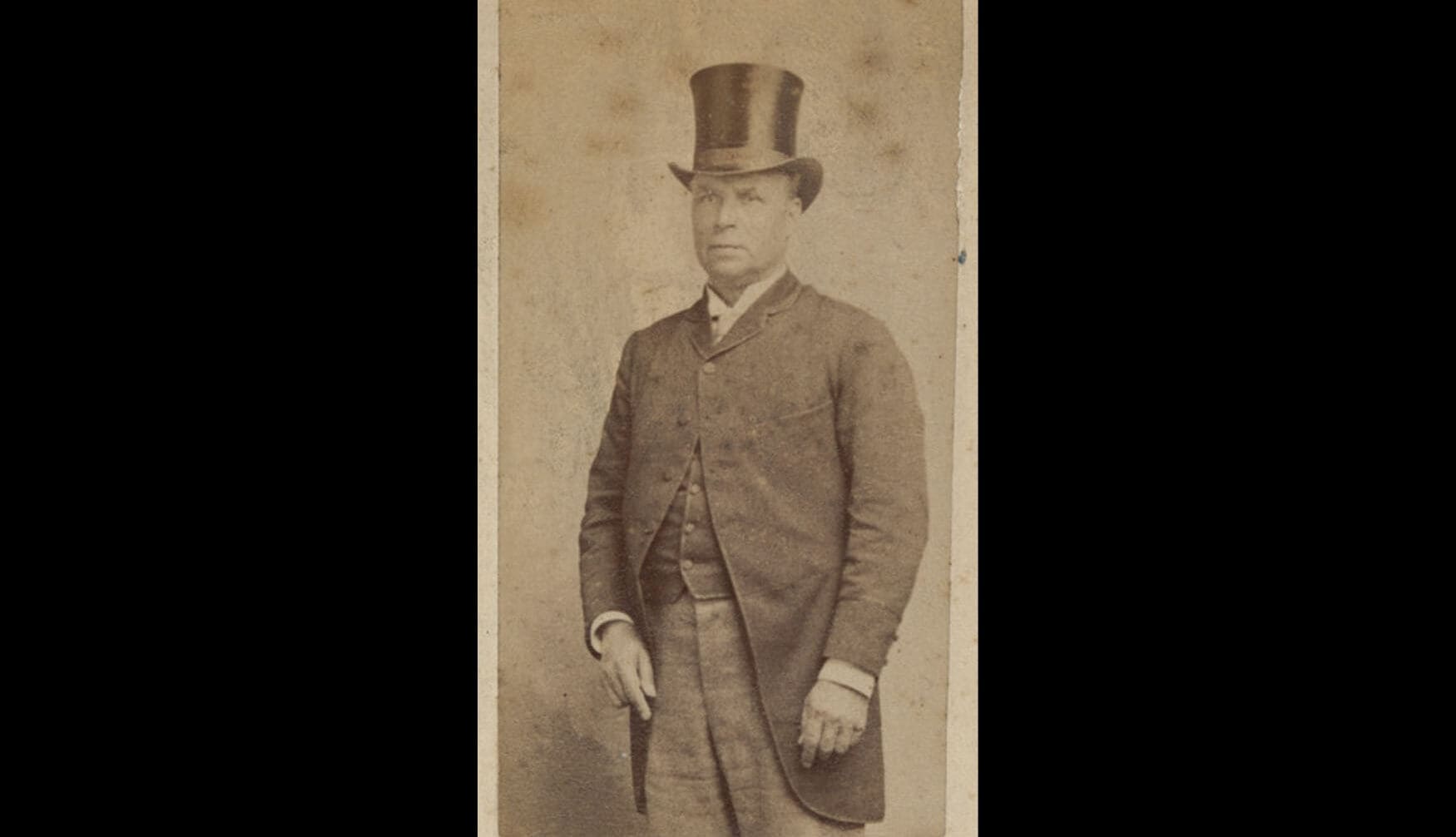
Thomas Gaunt was an English clockmaker who came to Melbourne in 1852, near the beginning of Victoria’s gold rush. He began working on Elizabeth Street for the Latvian-born Henry Newman, a jeweller who’d arrived the same year. Although Newman’s business was prestigious and famous for their opal jewellery, it wasn’t too long before Gaunt’s own skills were in significant demand. He opened his own store on nearby Bourke Street, trading in all kinds of specialty areas. His company made watches, clocks, jewellery, and even some optics and glasswork, essentially anything which required steady hands and artistry.
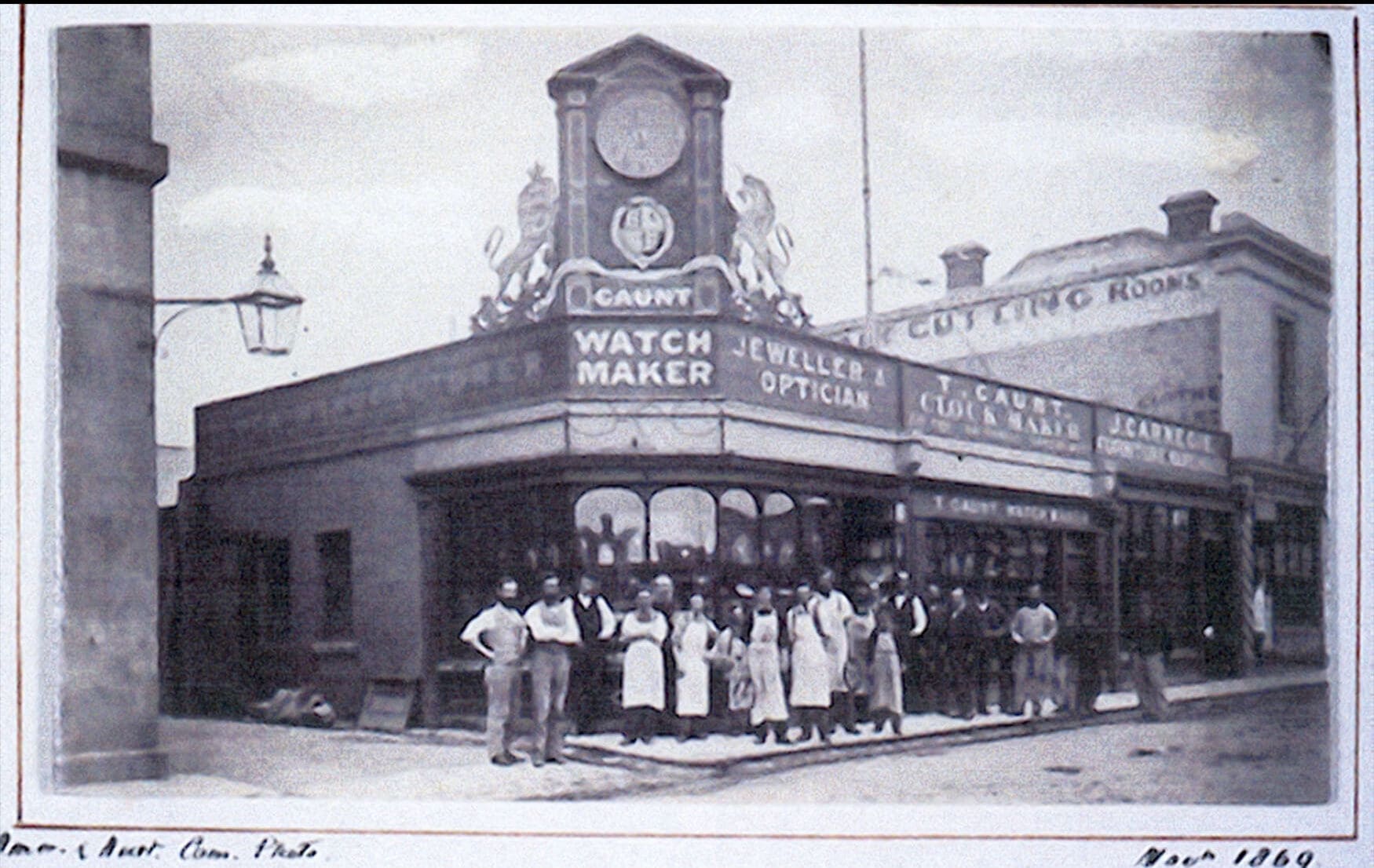
T. Gaunt & Co. employed a great many people over a number of decades, and some of the products you can still find in auctions or antique stores include marine chronometers, hydrometers and ornate candlesticks. But, those kinds of day-to-day items aren’t what Gaunt is remembered for. The most famous clocks of Flinders Street Station are those that were moved manually to show train departure times, but almost as iconic is the Flinders Street Station tower clock. Positioned directly in the centre at the end of Elizabeth Street, you can see it from blocks away in the red and gold tower. It was built as it is today in 1910, and the original water tower clock has since been moved to Southern Cross Station.
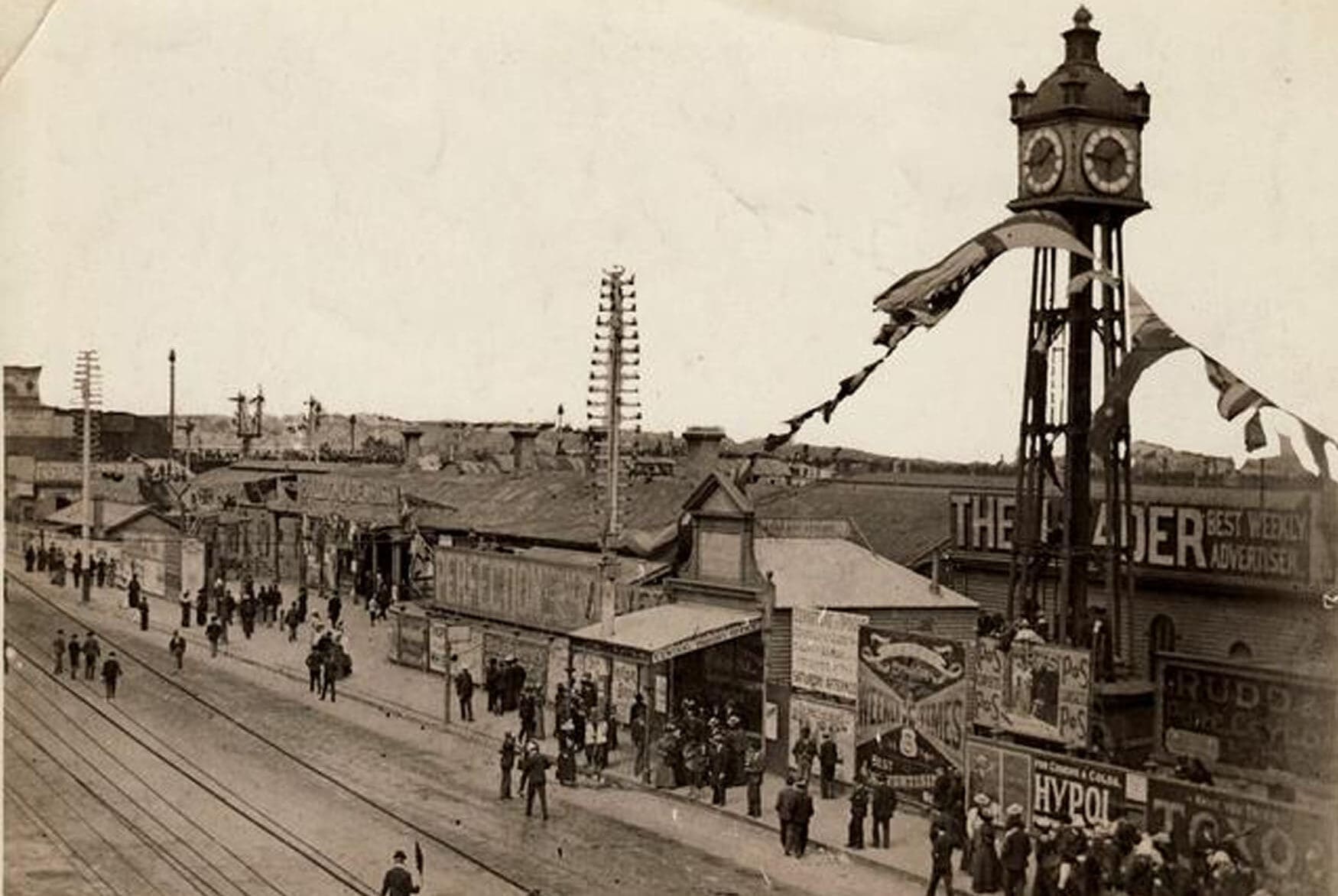
As the official Clock Maker to the Victorian Government, T. Gaunt & Co. also made the clocks for the General Post Office and the towns of Malvern and Camperdown. They branched out into South Australia as well, with tower clocks in Mount Gambier, Emerald Hill and eventually Adelaide. Sadly, Thomas Gaunt passed away at his home in 1890, but he was fondly remembered for setting the Royal Arcade clock every morning from signals sent by the Melbourne Observatory. He’d also made a fantastic chronograph for the Flemington Racecourse in 1876, which could time races down to a quarter of a second.
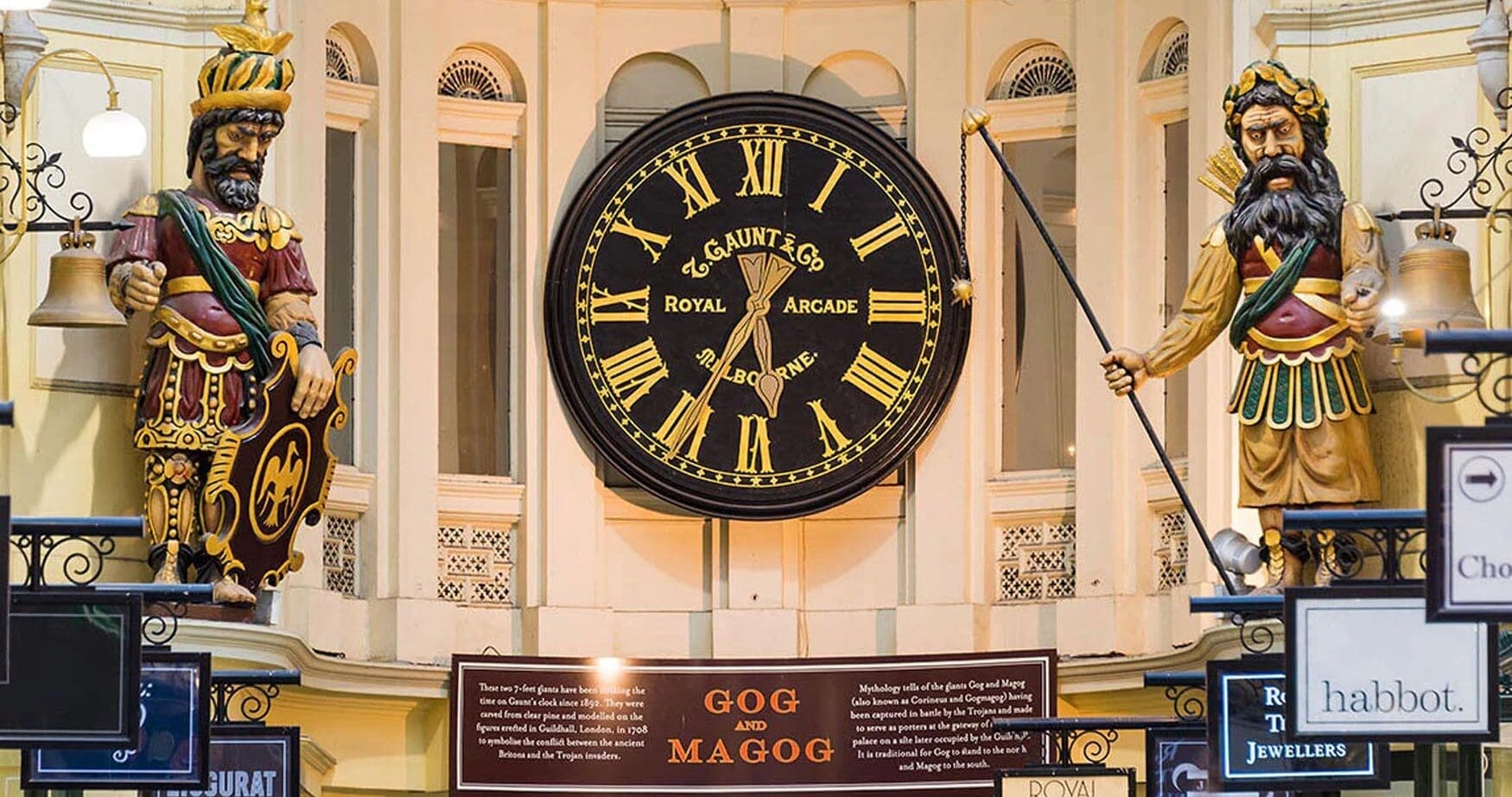
Although tower clocks are always a powerful sight, T. Gaunt & Co.’s most captivating installation has to be the figures of Gog and Magog in the Royal Arcade, where Gaunt’s shop was at the height of his business. Glaring down at shoppers with intense and hateful eyes, Gog and Magog are mythical giants who have had countless different legends attributed to them. Some say they are the heralds of the apocalypse, that they guard the gates of the underworld, or that they can be symbols for any warring nations. In any case, they were carved by Mortimer Godfrey and installed by T. Gaunt & Co. in 1892 on either side of a clock face made by Frederick Ziegler. Every quarter-hour, they animate to strike iron bells.
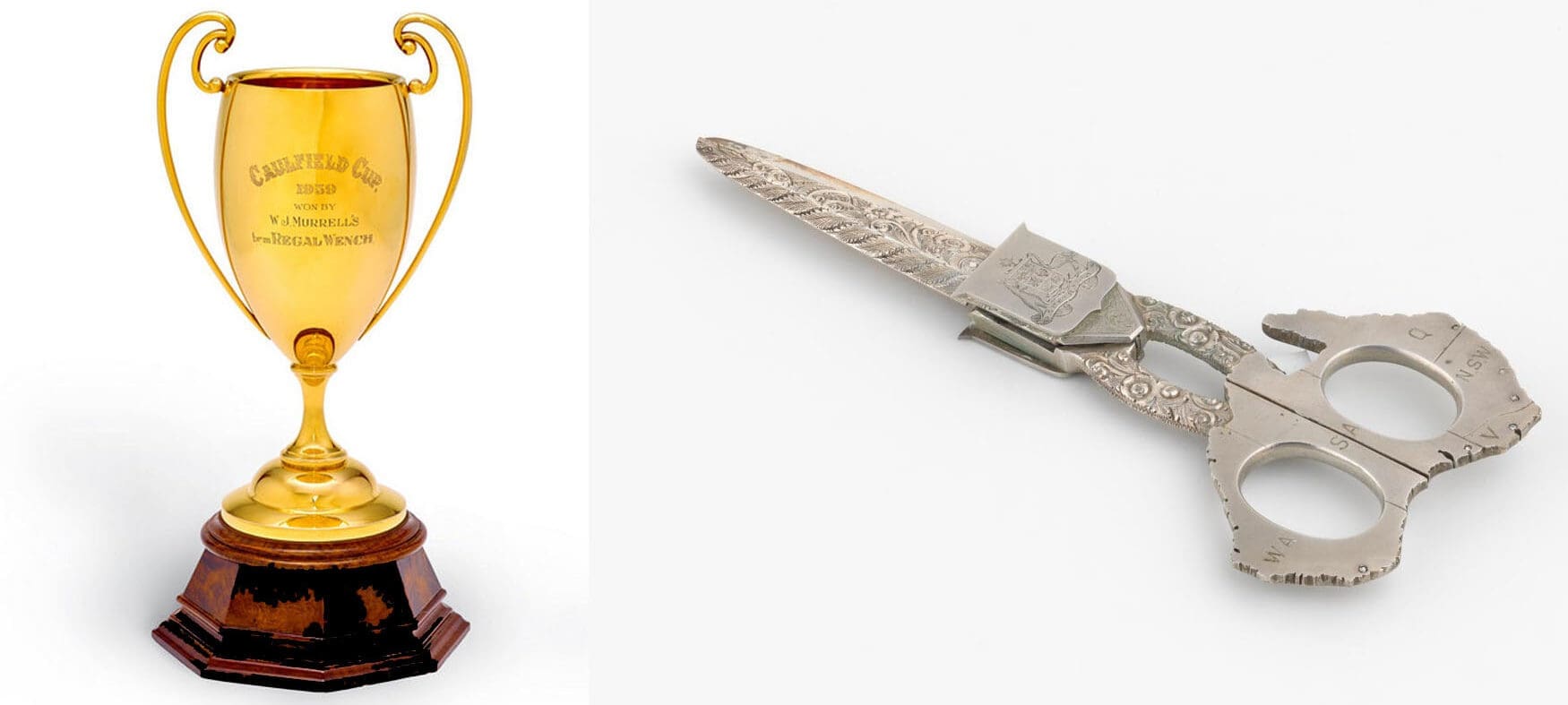
After Thomas Gaunt’s death, his company continued to thrive for decades. They produced plenty of useful tools alongside decorative objects, and many of them held great prestige. They manufactured the Caulfield Cup for ten years, originally made from over 650g of 18k gold. My favourite piece has to be the scissors made for the ribbon-cutting ceremony of the Trans-Australian Railway in 1917, with a map of Australia shaped into the handles. However, as competition grew and the economic climate made luxury goods less likely to be commissioned, T. Gaunt & Co. closed its doors in 1960. As long as Melbourne values its history, Thomas Gaunt and his company’s work will be remembered.




